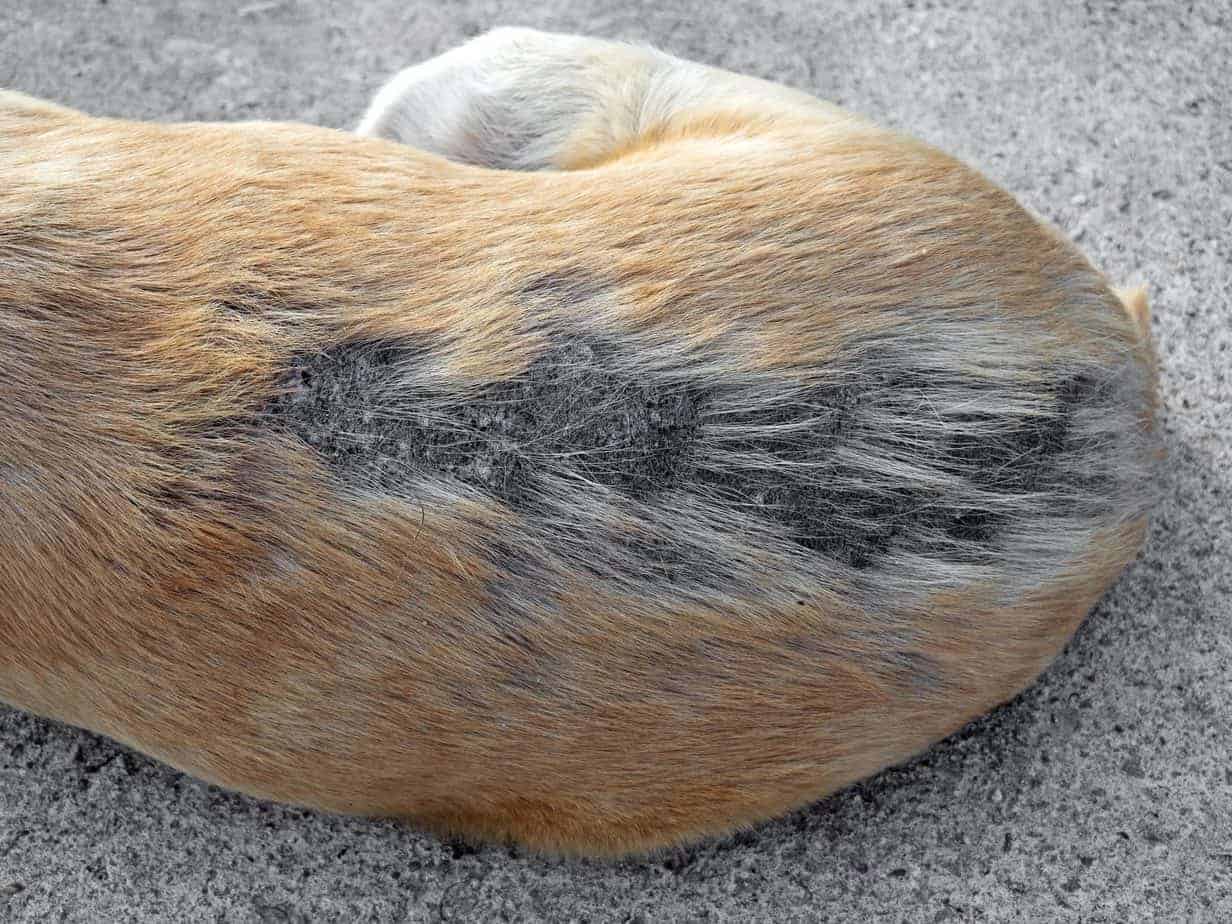Alopecia in Dogs: Why is Your Dog Losing Hair?
Table Of Content

View more pictures of Cushing’s disease or learn about hormonal issues in dogs. Treatment options for hair loss vary depending on the cause of the problem. For allergic reactions, treatment with antihistamines may work while bacterial and parasite infections may require other kinds of medication.

Symptoms Associated With Hair Loss and Scratching in Dogs
They may perform diagnostic tests, such as skin scrapings, hair plucks, or skin biopsies, to identify the underlying cause. When it comes to Demodex mites, they usually live harmoniously with a dog’s immune system. Yeast naturally resides on the skin, but when there is an imbalance or favorable conditions, such as warm and moist environments, it can proliferate and cause infection. Pressure sores can be exacerbated by other factors such as friction, moisture, or bacterial infections. Other home concoctions often used to treat hair loss are lemon juice, olive oil, aloe vera, and flaxseed oil.
Why Does My Cat Have a Bald Spot Under Their Collar? - POPSUGAR
Why Does My Cat Have a Bald Spot Under Their Collar?.
Posted: Tue, 01 Jun 2021 07:00:00 GMT [source]
Allergies
This will help spread out their natural skin oil to their skin and fur, keeping them naturally moisturized. Hair loss that’s caused by a thyroid disease needs a more complex treatment. The disease is usually treated with hormone therapy and thyroid medications. A sample of your dog’s blood will be taken and tested to see if they have certain immune system conditions, diabetes, or thyroid disorders.
A Diet Rich in Omega-3 Fatty Acids and Healthy Carbs

All dogs have some mites on their skin, but during times of high pressure, these mites will multiply hysterically. Fleas will also cause your dog to experience extreme itching when they nibble. It’s significant to treat your dog for fleas as soon as you see the first sign of fleas. Pus and/or hot spots are typically good pointers that an infection is present or not. They begin with a small itch but have dogs scratching themselves raw and bloody over time. Hair loss and acute itching can occur from definite allergic reactions.
Skin Irritation and Inflammation
They’ll likely recommend regular cleansing with a mild antiseptic or antimicrobial shampoo, then using an oatmeal-based dog shampoo to soothe irritated skin. If the cause is yeast, your vet will prescribe topical and oral antifungals. Your vet may recommend washing with canine shampoos with benzoyl peroxide, selenium disulfide, or other products designed to remove scale and grease. They may also prescribe an antifungal dog shampoo containing chlorhexidine, miconazole, or ketoconazole. If and when your dog starts to have alopecia in the future, it is vitally important that you see your veterinarian quickly in order to stop the progression of symptoms. Yeasty feet smell like Fritos, and ears have unique smells depending on yeast or bacteria.
Signs of Cushing’s disease
Treatment in the form of lifelong oral medication is very effective and can allow the skin to recover. Proper nutrition supports overall skin and coat health, which can decrease excess oil production and reduce chances of bacterial infections. A veterinarian will ask you questions about your dog and conduct a full physical examination.
Blood Tests
When cortisol levels are elevated, it can disrupt the normal hair growth cycle and lead to hair loss. Hives, also known as urticaria, are raised, reddened areas of the skin that can be very itchy for dogs. Hives occur as a result of an allergic reaction where the immune system overreacts to an allergen.
7 Best Dog Shedding Supplements - iHeartDogs.com
7 Best Dog Shedding Supplements.
Posted: Thu, 03 Aug 2023 07:00:00 GMT [source]
Your vet will use a scalpel or blade to scrape the skin surface and examine the cells under a microscope to look for signs of parasites. The anagen phase is the active growth phase, during which the hair follicles produce new hair. This phase typically lasts for a few months or longer, depending on the breed and individual dog. Some breeds of dogs are more susceptible to hair loss than others. Treatment options for skin cancer in dogs may include surgical removal of tumors, radiation therapy, chemotherapy, or a combination of these approaches. The goal is to control or eradicate the cancer while preserving the best possible quality of life for the dog.
Why Is My Dog Losing Hair But Not Itching?
The presence of vesicles and pustules can cause inflammation, redness, and subsequent hair loss in the affected areas. Skin cancer refers to the abnormal growth of cells in the skin, and it can occur in different forms, such as melanoma, squamous cell carcinoma, or mast cell tumors. An abnormality in the growth of the hair shaft refers to the visible part of the hair that extends from the hair follicle to the skin’s surface. Food allergies in dogs are typically related to proteins, which can come from both animal and plant-based ingredients in their diet.
According to one study of dogs with alopecia areata, hair grew back for 60% of the canine participants within just a few months of their initial diagnosis. For example, hair growth uses around 25%-30% of your dog's daily protein requirement. So, a diet low in protein could slow down hair growth or stop new growth altogether.
Probable reasons of itchy skin and hair loss consist of Mange Trauma Allergic reaction Infection. If hormonal conditions like an underactive thyroid are to blame, they will likely require longer-term care. Treatment for dog alopecia will depend on the reason for the hair loss. Again, there could be a number of causes, so getting a formal diagnosis from your veterinarian is key.
Comments
Post a Comment